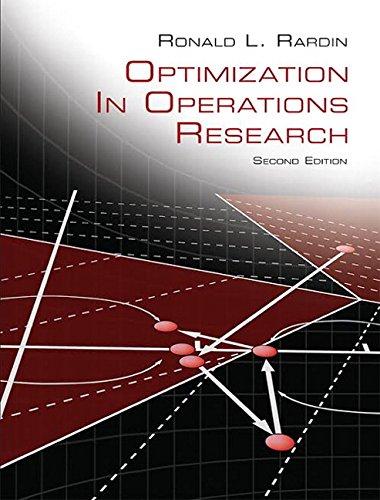Consider solving the NLP of Exercise 17-36 by barrier methods. (a) Use logarithmic barrier functions to reduce
Question:
Consider solving the NLP of Exercise 17-36 by barrier methods.
(a) Use logarithmic barrier functions to reduce this problem to an unconstrained barrier model.
(b) Explain why local minima of the unconstrained model in part
(a) for all m Ú 0 must be global minima.
(c) Determine whether the barrier objective of part
(a) is differentiable. Explain.
(d) Determine whether there will be a barrier multiplier m 7 0 small enough that the unconstrained optimum in part
(a) is optimal in the original model. Explain.
(e) Suppose that we are solving the given constrained NLP by the sequential unconstrained barrier Algorithm 17B. Explain why it is reasonable to begin with multiplier m = 2 and decrease it by a factor b = 14 after each unconstrained optimization.
(f) Use class optimization software to apply Algorithm 17B, starting at x102 = 13, 52 and managing the barrier multiplier as in part (e). Proceed while m Ú 1 32.
Step by Step Answer:






